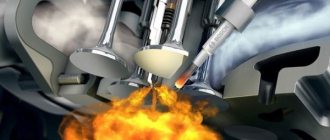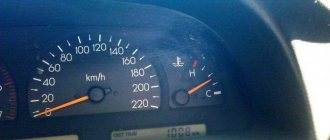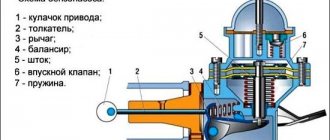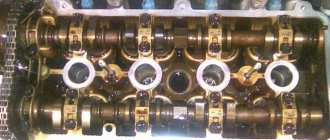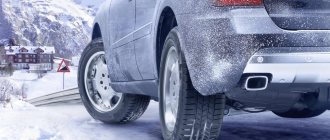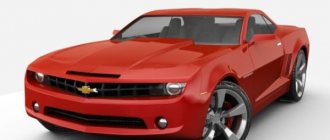Reasons why a car won't start in cold weather.
Battery problems.
This is a classic of the genre. The fact is that in cold weather the battery capacity is significantly reduced. If the battery is very discharged, it may even freeze.
Here is a small picture that perfectly shows the remaining battery capacity:
To avoid problems with battery charging, it is necessary to carry out battery maintenance once a year, before the start of the winter season.
It is advisable to replace it once every 5 years, since there is a high probability that the engine will not start in cold weather. Usually it happens like this:
If such a problem happens to you, do not rush to call a tow truck. You can ask fellow car owners to light a cigarette, here is an article about how to do it correctly.
The second common reason is problems with the ignition system.
Although automotive electronics are designed to ensure the ignition system operates when the engine is started, it often happens that there is not enough voltage for reliable sparking, so before the start of the winter season it is necessary to inspect the ignition system and change the spark plugs if their service life has expired.
The third common cause of problems with winter factory cars is condensation in the fuel or fuel that is out of season.
We have a separate article on the website about condensate in the tank and it makes no sense to repeat it, but in short - if there is a large amount of condensate in the tank, the mesh may become clogged and the fuel intake will freeze.
About fuel out of season - this problem is relevant only for diesel engines. Diesel fuel is very temperature dependent. Summer fuel begins to crystallize and deposit paraffin on filters already at a temperature of -5 degrees. They bring it to gas stations until the last minute, since it is cheaper. Therefore, if you drive a diesel car, buy anti-gel.
In extreme cold, no additives will help you. Diesel fuel will behave like this:
We agreed that if the temperature outside dropped below -30 there is no point in starting a diesel car.
If you have problems starting a diesel engine, water it with anti-gel and change the filters. Well, the main recommendation is to remove condensation from the tank and use fuel according to the season.
Problems with the lubrication system - the oil was filled out of season.
This point comes in last place, since most modern cars use semi-synthetic or synthetic oil with a viscosity of 5w30 or 10w40; both oils have sufficient viscosity in the winter season.
However, in severe frosts, fake oil may well thicken so much that it will be difficult for the starter to crank the engine.
The result is that the engine will not start.
You can check the condition of the oil by simply pulling out the dipstick:
Here is a short video about how oil thickens in cold weather:
Recommendations for solving the problem : use high-quality oil, taking into account its temperature characteristics. If your car is equipped with a manual transmission, do not be lazy to depress the clutch when starting the engine. This will make your starter last longer.
If you encounter oil thickening, wait for it to warm up or call a tow truck and change the oil in a warm place.
I can’t start my car in frosty weather! Why is that?
There can be many reasons. Most often, the car does not start in cold weather due to a dead battery. If you hear that the starter is lazily cranking the engine and getting worse with each attempt, it means that the battery is most likely completely discharged or cannot provide a strong enough starting current. This can happen even with a new battery if it has stood for a long time in 30-degree frost. Under such conditions, it will easily lose half of its rated capacity, and if the battery is two or three years old or more, the problem only gets worse.
So what should I do?
There are several ways. Probably the most traditional one is to ask someone to “light it”: connect your battery with special wires to the battery of another car that is already running. If you have problems with your battery in winter, it is better to always have the wires (they are called “crocodiles”) in the car. If you do not live in the desert, then, most likely, you will easily find someone ready to help you: there is a special solidarity among drivers that does not allow you to refuse in such situations. If there are no crocodiles, look for more prudent drivers or buy wires at a nearby auto parts store or gas station.
What's the result?
As you can see, the reasons why a car does not start can be different. For this reason it is necessary:
- carry out regular diagnostics of all components and systems of the car;
- troubleshoot problems in a timely manner;
- comprehensively service the vehicle according to regulations;
- choose the right lubricants and technical fluids;
- monitor the quality of fuel, prepare the car for winter in advance, etc.
We also recommend reading the article about why the engine does not. From this article you will learn about the main reasons why a previously warmed-up engine does not start.
As for diagnostics, the procedure should be carried out by experienced specialists using professional equipment. This approach allows you to minimize or completely eliminate unexpected breakdowns and failures when trying to start a car engine.
Problems with the starter
Sometimes a car refuses to start due to a broken starter. The starter requires energy from the battery to operate. Even the most reliable and powerful starters can sooner or later fail. Clicking noises may be heard while turning the key.
This is a signal that there is a similar malfunction. Rebuilding the starter may take some time, so car repair shops offer to replace their starter with a rebuilt one for an additional fee.
Why the car won’t start in the cold: mechanics named the most common reasons
If the engine of a car does not start, a modern person usually grabs his cell phone. But while waiting for help, it’s not a sin to think a little about the reason for what happened. It is possible that you can solve the problem on the spot yourself.
A modern car, as a rule, starts instantly - it does not need to be tormented by long “cranks”. But even such cars sometimes fail, especially in the cold: they won’t start - and that’s it. Not all reasons for winter “non-starts” are related specifically to frost. It often happens that in the cold, some hidden faults are simply in a hurry to manifest themselves. Just in case, we’ll try to list the most popular causes of engine vagaries, but let’s start with purely winter troubles. We’ll put aside horror stories like “the motor is jammed” or “the teeth of the flywheel are chipped” for later: this is a topic for another discussion.
Purely winter reasons The fuel decided to act up: something liquid froze. This could be drops of water in the gas line, or summer diesel fuel sold to you under the guise of winter (in the fuel tank, in the filter - it doesn’t matter). The real method of treatment is evacuation to a warm room. No antigels or other auto chemicals will help - these are just means of prevention, but not treatment. In the cold, the engine oil has thickened so much that the starter is unable to crank the crankshaft. The cure is obvious: see previous point. It was necessary to fill the oil on time for the season, but now you need to somehow get to a warm garage, and then “solve the issue” there. Or wait for the thaw if you are not in a hurry... The glow plugs in a diesel car are faulty. It is clear that in winter this occurs more often than in warm weather: many people deliberately heat the spark plugs in several stages before giving the starter the “Start” command. In short, you need to change them without hesitation, and all at once - it won’t get any worse. The starter turns incredibly slowly. If the oil is seasonal, then most likely the culprit is the battery, which has become weak from the hard winter life. Recharge, replace, light a cigarette from a good neighbor's car, use the starter - decide according to the situation and the actual condition of the battery. By the way, have you ever thought that the price of a new battery today is almost comparable to the cost of a couple of gas stations? In some cases, such a purchase is quite justified. The exhaust pipe is clogged. This could be caused by a purely winter reason: driving backwards into a snowdrift, for example. It is clear that the pipe, like the exhaust, needs to be “given freedom”.
In some cases, a tow truck is a lifesaver. For example, if the fuel is frozen in a diesel car, then the best way out is to drive with someone’s help to a warm room.
Demi-season reasons The funniest reason: the fuel has run out... No comments needed: look for what has run out. By the way, many people carry 5-liter cans with them just for this case: they don’t take up much space. And the good ones don’t stink, which is important. The anti-theft alarm went off. Or - even simpler: you yourself forgot to remove some kind of engine start lock. And it also happens: they tried to steal a car, but they didn’t have enough talent... In general, check your “security” just in case - what if this is the case? The fuel pump has failed. Everything is clear here: we are going broke installing a new one. The timing belt jumped several teeth, completely throwing off the valve timing. We need to return to the “status quo”.
In modern cars, the hoods are most often opened only to fill the washer fluid. Therefore, frankly, it will be better if an inexperienced person does not unscrew something without preparation. At the factory, we once used the following speech pattern: they say that unskilled intervention can aggravate the defect.
I ask everyone to whom the listed reasons seem elementary, to add your own examples to the proposed list. This will be useful - at least for beginners. Indeed, today, for a number of reasons, few people read all our publications, keeping the subscription “on the treasured shelf.” Therefore, sometimes you have to repeat yourself in something.
Fuel problems
Fuel is the engine's power, which causes the flywheels of the unit to rotate, setting the equipment in motion. If the fuel is not designed for use in severe frosts, this can cause great trouble for the driver. But this is not the main problem.
- You need to purchase gasoline or diesel fuel for your car at large network stations. Automotive fuel is a product like many others. There are original fuels, high-quality fakes, and not so good ones. By purchasing gasoline at gas stations with a global brand, you can protect yourself from purchasing counterfeit products.
- You should buy quality fuel. Gasoline or diesel with a low octane number does not tolerate low temperatures. When the thermometer shows -20 and below, such fuel begins to crystallize, the circulation of fuel through the fuel system is disrupted, and it is almost impossible to start the car. High-quality gasoline means it ignites instantly in the combustion chamber, no matter what the temperature outside the window.
- It is necessary to refill with winter brands of gasoline and diesel fuel. Petroleum products processing enterprises offer car owners a wide selection of winter fuel. It costs a little more, but this is the price to pay for stable engine operation in severe frost.
Of course, if you have the opportunity to leave your car in a garage or underground parking, then it’s better not to miss this chance, because it also means careful care of the car’s body.
What to do if the car still won't start?
Unfortunately, it happens in life that there is high-quality winter fuel in the tank, the battery charge is normal, but the car still refuses to start. What to do in such a situation.
- The main thing is not to panic. Starting the starter should not last more than 20 seconds. Anything higher is a waste of battery power.
- You should try to start the car at intervals no more than once per minute. It is important to observe this time mode so as not to drain the battery.
- Cover the hood of the car with a warm blanket or blanket so that the temperature in the fuel system increases by at least a couple of degrees. Often this is enough to power the car's mechanisms.
- If the car is not equipped with an automatic transmission and there are no restrictions from the on-board computer, or it is absent altogether, then you can push the car using the natural slope of the terrain.
You need to keep a cool head. The technology does not forgive mistakes, as well as rash actions on the part of the driver.
Elimination of causes and prevention
The reasons why a car won't start in cold weather are varied and cannot always be solved on your own. Most often we are talking about a worn out or faulty battery. The use of remote engine starting plays a big role in discharging it. Such a device helps to warm up the car before leaving, but if other consumers are forgotten and turned on, they are guaranteed to drain the battery charge. In some cases, it is more advisable to tow the car to a warm garage or for diagnostics at the nearest service station. At the same time, simple manipulations will help prevent your car from freezing.
What can be done:
- In severe frosts, be sure to keep the battery warm. This will increase the useful life of the battery and also help it start without problems even in extreme temperatures. It is better to replace a worn-out battery with a new one with a capacity of at least 65 Ah. Recharging should be carried out regularly; if even after a full charge the car does not start, the problem should be looked for elsewhere.
- Before starting, it is best to warm up the battery properly. To do this, you can turn on the low beam (15-20 seconds) or high beam (5-10 seconds), music in the cabin, and heated rear window.
- The start of the movement should be as smooth and unhurried as possible. During the first 15-30 minutes, it is recommended not to exceed speeds above 40-50 km/h. This will help the pads and discs gradually warm up and protect the engine from excessive overload.
- Carry out inspections and repairs of the car around mid-autumn. Replacing spark plugs, cleaning the terminals and adding electrolyte to the battery - all these procedures will not take much time and will be very useful before the cold weather. It has been proven that such preventive measures significantly increase the “life” of a car.
- Selecting the appropriate type of fuel and lubricants. According to the manufacturer's instructions (such information must be placed in the operating instructions), the appropriate marking of the engine oil is selected. For the winter period, it is advisable to purchase mixtures designated 0 W... or 5 W...
- The use of special esters. Similar products are often sold in car dealerships. These are “Quick Start” and other similar products.
- Filling the fuel tank full. An empty gas tank allows condensation to form, so this phenomenon should be avoided.
- Load limitation. It is known that car wear and tear occurs much faster in the cold season. That is why, if possible, it is worth driving the car to a warm place (or at least just a protected shelter) and not using it on particularly frosty days. It is better to take the battery with you to prevent the electrolytes from freezing. This will extend the life of the battery and will help you start the car without problems in the future.
Our information will definitely be useful for experienced and not so experienced car owners. What to do if your car won’t start in cold weather, as well as how to protect yourself from such troubles in the future - you will find useful tips on the topic in our article.
Fuel pump malfunction
Another reason why a car has trouble starting when cold is a faulty fuel pump.
In order to check whether the fuel pump is working, you need to turn on the ignition, and you will hear a buzzing sound from the gas tank, it will last for several seconds. As soon as the fuel supply stops, the required amount will be pumped in and pressure will be created in the fuel rail. The pump will then automatically turn off.
If you do not hear a buzzing sound and the car does not start, then you need to check the serviceability of the fuel pump.

